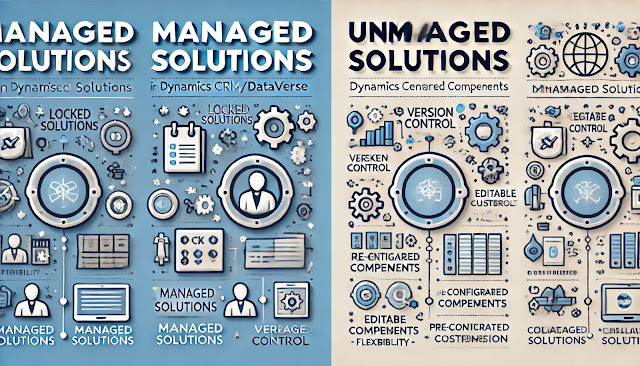Dynamics 365 Field Service : Create and manage customer assets
In field service industries like utilities, healthcare, manufacturing, and oil & gas, understanding the equipment or devices installed at customer locations is critical for delivering fast, consistent, and high-quality service. Dynamics 365 Field Service helps you achieve this through Customer Assets.
What Are Customer Assets?
Customer Assets in Dynamics 365 Field Service represent products, equipment, or systems that are installed at a customer's site. These can be anything from HVAC systems, medical scanners, motors, valves, or entire generator units — essentially, anything that you need to track for maintenance, service, or history.
They form a crucial part of the Service Management Lifecycle. By maintaining accurate asset records, businesses can:
- Track warranty or service agreements
- Manage preventive maintenance
- Keep historical records of service calls
- Enable automated scheduling based on asset needs
How to Create Customer Assets
There are multiple ways to create customer assets in Dynamics 365 Field Service:
1. Manually from the Customer Asset Form
You can manually create a customer asset from the Customer Asset table.
Steps:
1. Go to Field Service > Assets.
2. Click + New.
3. Fill in details like:
- Name – a descriptive name for the asset
- Product – link to the item from product catalog
- Customer – account or contact where the asset is located
- Service Account – used for work order routing
- Installation Date
- Warranty Expiration Date
- Parent Asset (for hierarchical assets, like a pump inside a compressor)
4. Click Save to create the asset.
2. From a Work Order (using Product to Asset flow)
When a technician installs a product as part of a work order, the system can automatically convert it into a customer asset.
How it works:
When the Work Order Product has a `Billing Type = Billable` and `Is Copied to Customer Asset = Yes`, it will auto-create an asset upon work order completion.
This reduces manual entry and ensures assets reflect real-world installations.
Managing Customer Assets
1. Asset Hierarchies
You can create parent-child relationships between assets.
Use Case: A boiler system (parent) with components like a pump, valve, and controller (children).
- Navigate to a Customer Asset
- Use the Related Assets or the Parent Asset field to define relationships
This helps field technicians visualize asset layouts and troubleshoot faster.
2. Service History Tracking
Every Work Order, Booking, and Inspection related to an asset is automatically tracked.
Go to the Customer Asset record, and check:
- Service History tab
- Related Work Orders
- Related Bookings (when a technician worked on the asset)
- Notes and Attachments (e.g., inspection photos)
This provides a 360-degree view of the asset over its lifecycle.
3. Preventive Maintenance
Assets can be tied to maintenance schedules using Agreements in Field Service.
Example:
If an HVAC unit needs quarterly inspections:
- Create an Agreement with a schedule
- Link the asset(s) under the Agreement Booking Setup
- Field Service auto-generates Work Orders for each visit
4. Warranties and Service Agreements
Assets can store:
- Warranty Expiry Date
- Warranty Status
- Links to Entitlements (support terms)
- Contract Coverage
This ensures only valid services are delivered and billable work is tracked.
Customization and Integration Options
You can extend the asset functionality through:
- Power Automate – trigger workflows on warranty expiry, service due, etc.
- Canvas or Model-Driven Apps – build mobile-friendly interfaces for technicians
- IoT Integration – stream data from connected assets for predictive maintenance
Mobile Experience
Field Service mobile app users can:
- View asset history at job site
- Add notes, photos, and inspection results
- Scan QR/barcodes to identify assets
- Update asset condition/status
This enhances field efficiency and improves data accuracy.
Final Thoughts
Properly managing Customer Assets in Dynamics 365 Field Service is a game-changer for service-centric organizations. It enables better planning, more informed decision-making, and ultimately improves customer satisfaction by reducing downtime and enabling proactive service.
By leveraging automation, mobility, and analytics around assets, your service team becomes smarter, faster, and more reliable.












Comments
Post a Comment